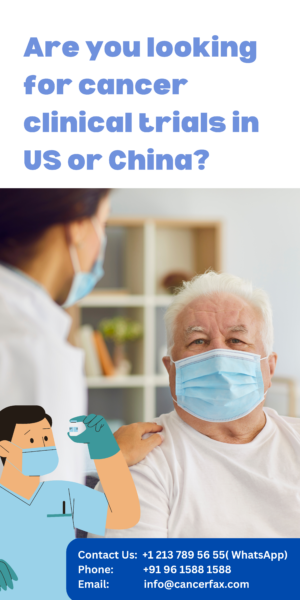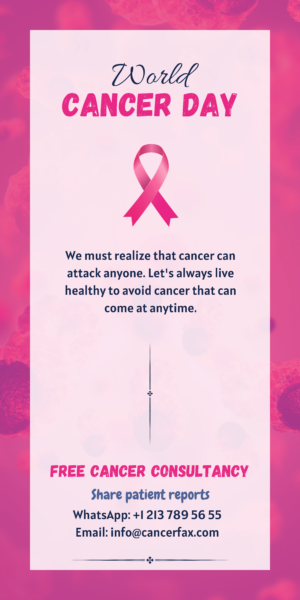Germ cell ovarian cancer
Germ cell ovarian cancer

Ovarian reproductive cells (germ cells) give rise to ovarian germ cell cancers. Two tiny organs called ovaries are located in the pelvic. The female reproductive system includes ovaries. They create female hormones and eggs.
The majority of benign germ cell malignancies in the ovaries (not cancer). Rarely are the tumours carcinogenic (cancerous). Although they can grow in older women as well, ovarian germ cell tumours typically appear in young women under the age of 20. A tumour often only develops in one ovary.
Chemotherapy or surgery are two options for the treatment of cancerous tumours. The prognosis is based on the cancer’s stage, the size of the tumour, and if it has spread to other areas of your body. The majority of germ cell cancers are curable.
Types of ovarian germ cell tumors
There are several types of germ cell tumors. The most common types of ovarian germ cell tumors are:
- Dysgerminoma: This is the most common type of malignant ovarian germ cell tumor.
- Mature teratoma (dermoid cyst or ovarian cyst): This is the most common type of benign ovarian germ cell tumor. These noncancerous tumors usually grow in teenage girls and young women.
- Immature ovarian teratoma: This malignant tumor can spread from your ovary to other parts of your body.
- Endodermal sinus tumors: Providers also call this malignant tumor a yolk sac tumor. These tumors grow very quickly and usually affect children and young women.
Signs and symptoms
Early warning symptoms of ovarian germ cell cancers may be challenging to identify. Malignant tumour symptoms typically don’t show up until the cancer has spread. The following are signs of all ovarian germ cell tumours:
- Pelvic pain or tenderness: Pelvic discomfort, cramping and ovarian pain are common symptoms of germ cell tumors.
- Swollen belly (abdomen): Young women and girls may have a bloated belly with or without weight gain in other areas of the body.
- Nausea or difficulty eating.
- Changes in bowel habits (constipation).
- Irregular vaginal bleeding. This is a less common symptom of germ cell tumors. Sometimes, people with these tumors often mistake vaginal bleeding for their regular menstrual cycle. But bleeding that results from an ovarian germ cell tumor is not the same as bleeding during menstruation. Older women may have bleeding after menopause.
Diagnosis of germ cell ovarian tumor
Diagnosis of germ cell ovarian tumors are done using following tests and scans:
- Pelvic exam, to check for growths and other abnormalities in your abdomen, pelvis and vagina.
- Pap smear, a test that looks for abnormal cells in your cervix (the lower part of the uterus).
- Laparoscopy, a procedure that uses small incisions (cuts) and helps your provider look at your organs. Providers may also remove ovaries and take tissue samples for testing (biopsy).
- Laparotomy, a procedure that requires a bigger incision to see a larger part of your abdomen.
- Transvaginal pelvic ultrasound, to see images of your reproductive organs.
- CT scan, to see detailed images of your reproductive organs and other soft tissues and to check for tumors.
- Serum tumor marker test, a blood test that checks the levels of certain substances in your body. Higher levels of alpha-fetoprotein (AFP), LDH or human chorionic gonadotropin (HCG) can be signs of germ cell tumors.
- MRI, an imaging test that produces pictures of organs, soft tissues and tumors using a high-powered magnet and radio waves.
Stages
After surgery, germ cell tumours are identified. Oophorectomy is the surgical procedure used to remove the ovary. Following a diagnosis of germ cell tumours, medical professionals stage the condition and assign it a classification. The size and location of the tumour are assessed by the professionals. They assess whether the tumour has migrated to nearby tissues or other bodily regions.
Your doctor might request tests like a CT scan to get this information. Your cancer care team can assess the stage of the disease with the aid of these tests.
Stage 1 germ cell tumour typically denotes that the malignancy has not progressed past the ovaries, fallopian tubes, or abdomen. Stages 2 to 4 indicate a more advanced form of the disease with a larger tumour. It has “metastasized” (spread to other body parts).
Treatment of germ cell ovarian tumor
The type of tumour and the disease’s stage affect the course of treatment. After the tumour has been surgically removed, doctors may advise observation. This means they examine for indicators of tumour growth during routine appointments to monitor you. Malignant ovarian germ cell tumours are typically handled by medical professionals with:
Surgery
In order to remove one or both of your ovaries or fallopian tubes, your doctor might advise an oophorectomy. You might require a total hysterectomy if the cancer has advanced past the ovaries and fallopian tubes. Your doctor will remove the uterus and cervix during this treatment. Your doctor might suggest a minimally invasive procedure. Less recuperation time is needed with this treatment, which employs a smaller incision.
Chemotherapy
Your healthcare professional typically administers chemotherapy medications through an infusion into one of your veins. The medications eradicate cancer cells and prevent their growth. Chemotherapy sessions may span several weeks or months.
Take second opinion on germ cell ovarian tumor
- Comments Closed
- July 1st, 2022



Latest Posts
- Targeting FGFR4 and CD276 with CAR T-cells demonstrates a strong antitumor impact against children rhabdomyosarcoma
- Disruption of CD5 on CAR T Cells Enhances the Effectiveness of Anti-Tumor Treatment
- The future of gene therapy: What to expect in the next decade?
- Unlocking the genetic code: The future of gene therapy for genetic disorders
- CRISPR and gene editing: Revolutionizing gene therapy
- Aids cancer (4)
- Anal cancer (8)
- Anemia (5)
- Appendix cancer (3)
- Basal cell carcinoma (1)
- Bile duct cancer (7)
- Bladder cancer (10)
- Blog (3)
- Blood cancer (56)
- Bone cancer (11)
- Bone marrow transplant (43)
- Brain Tumor (48)
- Breast Cancer (48)
- Cancer (787)
- Cancer surgery (234)
- Cancer treatment in South Korea (341)
- cancer treatment in Thailand (331)
- Cancer treatment in Turkey (329)
- Cancer treatment in USA (328)
- CAR NK-Cell therapy (12)
- CAR T-Cell therapy (95)
- Cervical cancer (41)
- Chemotherapy (36)
- Childhood cancer (2)
- Cholangiocarcinoma (3)
- Clinical trials (5)
- Colon cancer (95)
- Coronavirus (1)
- Cosmetic surgery (7)
- COVID19 (2)
- Doctor (37)
- Drugs (19)
- Endometrial cancer (9)
- Esophageal cancer (15)
- Eye cancer (9)
- Gall bladder cancer (3)
- Gastric cancer (22)
- Glioblastoma (1)
- Gynecological cancer (2)
- Head and neck cancer (20)
- Hematological Disorders (50)
- Hospital (47)
- Immunotherapy (25)
- Kidney cancer (10)
- Laryngeal cancer (1)
- Leukemia (44)
- Liver cancer (94)
- Lung cancer (65)
- Lymphoma (44)
- MDS (2)
- Medical tourism (71)
- Medical visa (11)
- Melanoma (8)
- Merkel cell carcinoma (1)
- Mesothelioma (4)
- Myeloma (22)
- Oral cancer (13)
- Ovarian Cancer (13)
- Pancreatic cancer (39)
- Penile cancer (1)
- Procedure (19)
- Prostrate cancer (10)
- Proton therapy (26)
- Radiotherapy (35)
- Rectal cancer (57)
- Sarcoma (11)
- Skin Cancer (13)
- Spine surgery (8)
- Stomach cancer (40)
- Surgery (54)
- Systemic mastocytosis (1)
- T Cell immunotherapy (2)
- T-Cell therapy (7)
- Testicular cancer (5)
- Thoracic surgery (2)
- Throat cancer (6)
- Thyroid Cancer (14)
- Treatment (746)
- Treatment in China (646)
- Treatment in India (684)
- Treatment in Israel (586)
- Treatment in Malaysia (360)
- Treatment in Singapore (255)
- Treatment in South Korea (238)
- Treatment in Thailand (233)
- Treatment in Turkey (233)
- Uncategorized (39)
- Urethral cancer (9)
- Urosurgery (14)
- Uterine cancer (3)
- Vaginal cancer (6)
- Vascular cancer (5)
- Vulvar cancer (1)






Privacy Overview